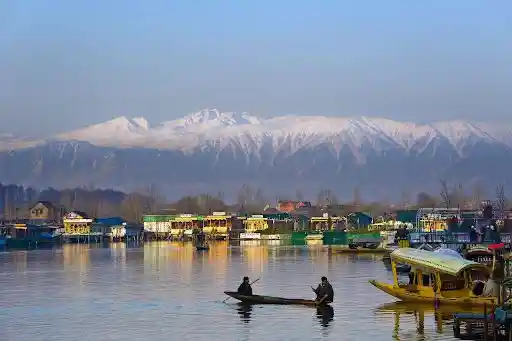Srinagar: A History of its Colonial Exploitation.
The largest city and the winter capital of Jammu and Kashmir, India, is called Srinagar. It is situated in the Kashmir Valley among the Dal and Anchar lakes and the Jhelum River, an Indus tributary. The natural surroundings, gardens, waterfronts, and houseboats of the city are well-known.

Srinagar; Image Source: Thrillophilia
The earliest evidence, such as Kalhana's Rajatarangini, acknowledges the Sanskrit name shri-nagara that has been construed recognisably by academics in two ways: first being sūrya-nagar, indicating 'city of the Surya' (trans) 'city of Sun' and other being 'the city of Shri, the Hindu goddess of abundance, meaning 'city of Lakshmi'.
On March 16, 1846 A.D., the treaty known as Bainama Amritsar was signed as a result of the collapse of the Sikh dominion in Punjab. According to the agreement, Maharaja Gulab Singh, the Dogra Raja of Jammu, received a sizable region that was west of the River Ravi and east of the River Indus. The pact granted the Maharaja unrestricted control over the lives and property of the local inhabitants through several stipulations, which resulted in extortionate taxation and unheard of levels of human suffering.
The pact and its brutal implementation caused embarrassment for the British suzerains, who made significant efforts to make changes in how the cession territory, particularly Kashmir, was governed. For the purpose of introducing accountability and order to the administrative structure, British officials were deputised to implement these corrections.
When men of merit and adventure dominated events and deeds in history, Kashmir had its fair number of such individuals who rendered distinguished service to the British Empire in India while maintaining a high degree of objectivity. They were experts in several professions who cared deeply for the welfare of others and were acutely aware of the suffering and deplorable living conditions inflicted on the people of Kashmir.
At the signing of the Treaty of Amritsar in 1846 A.D., the British government essentially gave the Gulab Singh family property ownership. The main source of income for the State was land revenue, and the ruling class ran a very repressive and arbitrary collection system that led to the agrarian population being reduced to poverty and famine. The British emperors encouraged Maharaja Pratap Singh to carry out a settlement of the land records in order to introduce some discipline and order to revenue collection in order to lessen the suffering of the local peasants.
The history of Srinagar is steeped deeply in colonial exploitation. Today it is a flourishing city with its riches and beauty but it has travelled through years of highs and low to reach its current sociological baring.


